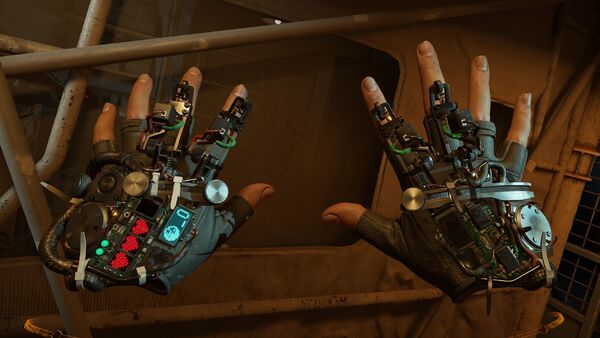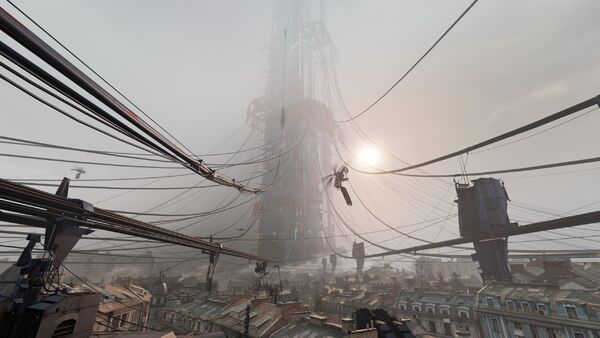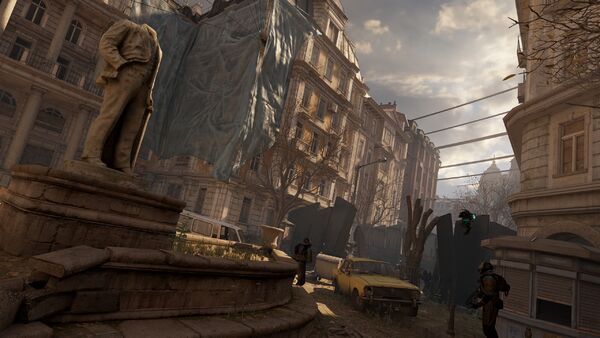Half-Life: Alyx is what VR games should be
Thirteen years after Episode 2, Valve finally returns to the Half-Life universe with a VR-exclusive prequel titled Half-Life: Alyx. You play as resistance member Alyx Vance in between the events of the first and second game, attempting to fight the brutal alien combine enslaving Earth. The game is designed for Valve's new Index headset, but will work with any PC VR headset on the market. Expectations were understandably high for the long-awaited continuation of the Half-Life franchise, but Alyx more than lives up to them, setting a new standard for VR gameplay.

As a relatively new technological platform, the VR game marketplace has long been dominated by tech demos, proofs of concept, and "VR experiences" that amount to little more than a glorified walking simulator. Even the few exceptional games, like Beat Saber and Robo Recall are generally small and simple compared to conventional AAA games. Half-Life: Alyx is the first game I've played on my Oculus to actually feel "full-sized." I finished the story in about 12 hours, taking my time to explore each area, and I'm sure I didn't find everything.
The gameplay is also some of the best I've seen in VR. The game uses continuous locomotion with a joystick, as well as teleportation-based movement for those prone to motion sickness. Traversing environments, climbing ladders, and peering around corners all work flawlessly, and I soon stopped noticing the locomotion at all.
Interacting with the environment is where Alyx's gameplay really shines. Rummaging through boxes, open drawers, and grabbing objects feels more natural in this than any other game I've played. The new physics system in the Source 2 engine is really incredible. Everything behaves the way you'd expect, and it creates this amazing believable feel to the world.
One of the game's unique features is the "gravity gloves," which you can use to sort of fling distant objects toward yourself. At first this mechanic felt a little awkward, but after doing it literally twice it suddenly clicked. From that point on it felt as natural as anything: see a full pistol magazine on the other side of the room, point your hand at it, and with a flick of the wrist it comes flying toward you for you to catch. It's incredibly fun to do, and saves you from having to bend down to grab stuff off the floor all the time.

The gunplay also feels really satisfying. Instead of just pressing a button to reload you have to manually eject the empty magazine from your pistol, or feed shells into your shotgun. It's a neat feature that adds to the realism of the game and feels cool to do. Actually aiming and firing the guns is perfectly fine, but that's something VR has always been good at.
I was a bit disappointed in the weapon variety on display. You get a basic pistol, shotgun, and SMG, and that's it. No .357 Magnum, no pulse rifle, no rocket launcher, no two-handed weapons at all actually. Most glaringly absent is any kind of melee attack. How can a Half-Life game not have a crowbar? Despite the environments being full of realistic physics objects, they all just bounce ineffectively off of enemies. When you run out of ammo (which you likely will in the early game when bullets are scarce) all you can do it run away and hope to stumble upon a spare shotgun shell before the zombies get you.
Fortunately VR brings some new combat opportunities to the table. Nothing beats the feeling of catching a leaping headcrab out of the air and flinging it through a nearby window. VR's full range of motion allows you to use cover more effectively, crouching behind concrete barriers and peering out to shoot at Combine grunts. You can even use the gravity gloves to catch live grenades out of the air and throw them back, an action which is simultaneously satisfying and terrifying.
The game looks great too, with Half-Life's classic art style brought to modern graphical standards. I particularly liked all the new Combine technology we get to see and interact with. Dark tunnels filled with venom headcrabs are far more scary in virtual reality, and the excellent sound design and soundtrack only add to this.

I won't go into the story much so as to avoid spoilers, but it's what you would expect from a Valve game. Although it's a prequel you to have to play all the other Half-Life games first, as it spoils the ending of Episode 2 in the first 10 seconds. I liked all the characters, especially the newly introduced resistance scientist Russell, I just wish there were more of them. You spend most of the game just talking to one guy, which makes the world feel kind of barren.
I unfortunately had to play on my old-ish PC and original Oculus Rift headset, which meant "low fidelity" graphics and occasional crashes (when they recommend 12 GiB of RAM they really mean it). Still, Half-Life: Alyx is one of the best VR games I've played, and sets a new standard for gameplay design in virtual reality. I had a blast with it, and I hope that it will lead to increased interest and development in the world of VR from other game studios.
Now we just need VR Left 4 Dead and Portal games.